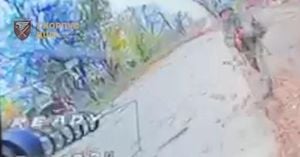As the 2026 FIFA World Cup draws ever closer, the United States and its co-hosts, Canada and Mexico, are ramping up preparations for what promises to be the largest and most ambitious tournament in football history. But amid the excitement over expanded teams, new mascots, and continental pride, there’s another pressing storyline: the race to secure the skies above the 104 matches set to unfold across dozens of North American cities. With the world’s eyes on the pitch, U.S. officials are investing heavily in counter-drone technology—ushering in a new era of sports security that’s as much about radar and jamming equipment as it is about goals and glory.
On October 14, 2025, the federal government announced plans to pour roughly $500 million into counter-drone systems ahead of the World Cup. This sweeping initiative, detailed by Andrew Giuliani, director of the White House’s 2026 World Cup task force, is designed to shield stadium venues and mass gatherings from the rising threat of unauthorized drones. "Everyone from governors to stadium chief security officers has called for stronger drone defenses at World Cup sites," Giuliani told Politico, underscoring the urgency felt at every level of event planning.
This isn’t just about protecting soccer’s biggest showcase. The program, funded through the Department of Homeland Security under the "Unified Great Beautiful Act" passed in July, is part of a broader White House push to strengthen U.S. airspace sovereignty. The $500 million will be distributed to all 50 states, with priority given to cities hosting World Cup matches. Federal officials envision a security net where state and local law enforcement agencies—under federal oversight—can detect, jam, or even order rogue drones to return to their launch points during the tournament. It’s a notable shift, as current law only allows federal agencies to intercept or neutralize drones in U.S. airspace.
But there’s a catch: the legal framework underpinning these efforts is in flux. Counter-UAS (Unmanned Aircraft Systems) authorities expired at the end of September 2025, a casualty of the ongoing government shutdown. This lapse means that, for now, the Departments of Justice and Homeland Security lack clear authority to proactively mitigate unauthorized drone threats near airports, military installations, and major events. Detection capabilities remain active, but the ability to take action is severely restricted. Law enforcement leaders and infrastructure operators have voiced concerns that this gap could invite reckless or even malicious drone activity, just as threat levels appear to be rising globally.
Congress is working to close this loophole. Lawmakers are considering H.R. 5061, a bill that would restore and expand counter-UAS authorities while creating a pilot program for state and local law enforcement participation under federal supervision. The proposed legislation includes training requirements, privacy protections, and standardized equipment approval processes—measures designed to balance the need for security with civil liberties and operational clarity. If passed, it would mark a first: direct integration of state and local agencies into national counter-drone operations, a significant step as North America prepares for not only the World Cup but also the 2028 Olympic Games in Los Angeles and the 250th anniversary of U.S. independence.
The push for better drone defenses isn’t happening in a vacuum. The U.S., Canada, and Mexico have already held their first trilateral meeting in Mexico City, focused on coordinating anti-drone strategies and developing common security standards for the tournament. "The World Cup games will start in nine months, and this cannot be postponed. So let's acquire the necessary equipment to ensure maximum security," Giuliani emphasized, reflecting the ticking clock and the high stakes involved.
This sense of urgency is echoed by FIFA Security Director H. B. Jones, who told Congress that state and local services must be equipped with "the resources and legal framework necessary to mitigate drone threats." The specter of drones disrupting matches or endangering fans isn’t just theoretical. Drones are a revolutionary technology. They have amazing potential for both good and evil. "We will strengthen the enforcement of existing laws to deter two types of people: villains and idiots — the ignorant and the negligent," Giuliani declared, highlighting the dual-edged nature of unmanned aircraft.
Operationally, deploying counter-UAS systems on a grand scale is no small feat. Detection systems may rely on radar, radio frequency monitoring, acoustic sensors, or optical and infrared cameras. Mitigation can include signal jamming, command takeover, or even physical interception—each method carrying its own risks and ethical questions. Experts stress that clear command authority, rigorous operator training, and seamless coordination between federal and local agencies are essential for success. These are not just technical challenges, but also legal and ethical ones, as the U.S. seeks to balance public safety with privacy and civil rights.
Meanwhile, the World Cup itself is shaping up to be a truly global spectacle. As of October 14, 2025, 43 nations have already qualified through their respective continental tournaments, with two more spots to be decided in an intercontinental playoff involving six teams in March 2026. The three host nations—United States, Mexico, and Canada—are automatically through to the group stage. Africa boasts nine direct qualifiers and one playoff spot; Asia sends eight teams directly and one to the playoff; North and Central America and the Caribbean have three direct berths, two playoff opportunities, and the three hosts. South America secures six automatic places and a playoff contender, while Oceania is guaranteed a direct spot (claimed by New Zealand) and a playoff chance for New Caledonia. Europe, as ever, leads the way with 16 teams in the expanded tournament.
Adding a touch of color to the festivities, FIFA recently unveiled the official mascots for the 2026 tournament: Maple the moose for Canada, Zayu the jaguar for Mexico, and Clutch the bald eagle for the United States—each symbolizing the spirit of their respective nations. The games will run from June 11 to July 19, 2026, promising a month-long celebration of sport, culture, and international camaraderie.
Yet beneath the pageantry and anticipation, the challenge of securing the World Cup looms large. Private-sector and national security experts have repeatedly warned that U.S. counter-drone policy lags behind the rapid advances seen in unmanned systems worldwide. Adversaries continue to refine drone swarming and electronic warfare tactics, while U.S. agencies remain constrained by limited legal authority and fragmented coordination. The current gap in counter-UAS authority—described by industry observers as a "gap in the fabric" of national security—underscores the need for lasting policy solutions, not just temporary patches.
For the drone and counter-drone industries, the months ahead will be pivotal. The administration’s $500 million initiative could accelerate new system deployments and foster unprecedented collaboration between government and industry. But without restored legal authority and robust operational frameworks, uncertainty will persist, threatening to overshadow the tournament’s promise.
With the countdown to kickoff underway, the world will be watching not just the players on the field, but also the unseen guardians overhead, working tirelessly to keep the beautiful game safe for all. The outcome of these security efforts—and the legislation behind them—may well set the standard for major sporting events in the drone age.




